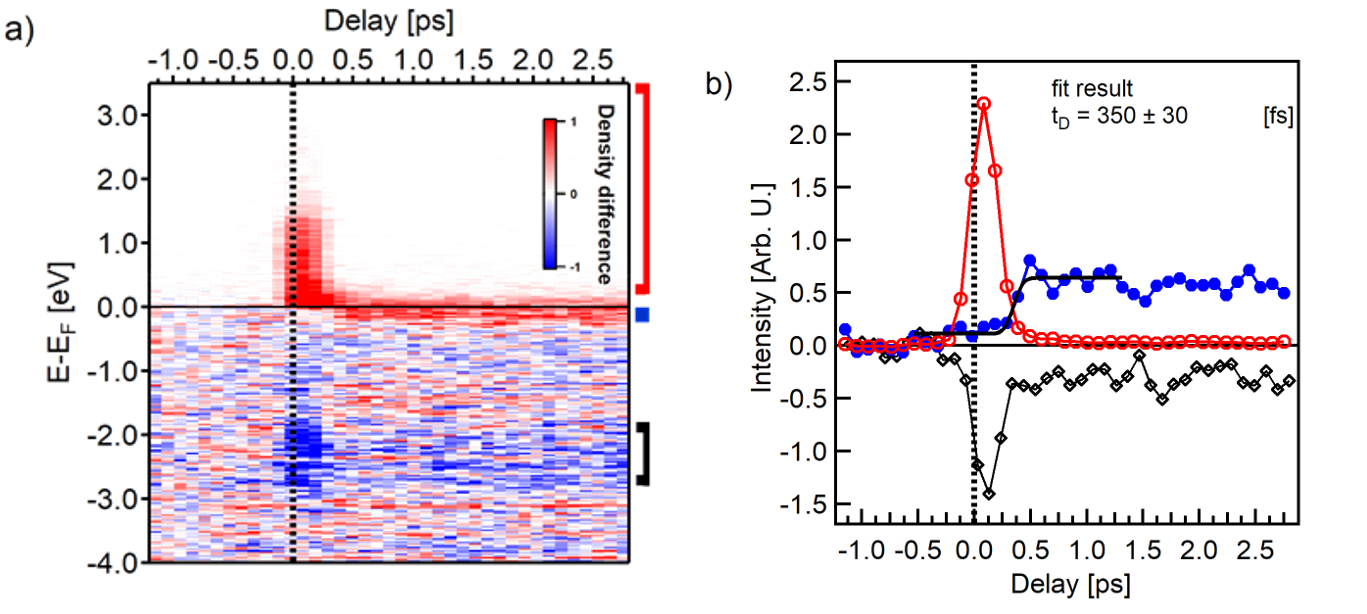Femtosecond light-induced phase transitions between different macroscopic orders offer the possibility of adjusting the functional properties of condensed matter on ultra-fast time scales. In first-order phase transitions, transient non-equilibrium phases and inherent phase coexistence often prevent unambiguous detection of transition precursors and their temporal onset.
The alloy between Fe and Rh is a particularly interesting system thanks to its unique characteristic of being an antiferromagnet at room temperature and a ferromagnet beyond 100 C. A femtosecond laser pulse can induce the transition and the correlated atomic displacements are measured on a time scale of tenth of picoseconds.
In a European collaboration with German, Czech, French and Italian partners and free electron laser experiments at FLASH in Hamburg we studied the phase transition by looking at the dynamics of electrons by time-resolved photoelectron spectroscopy and by ab-initio calculations of electronic dynamics.
We explain transient subpicosecond processes governing the photoinduced generation of ferromagnetic order in antiferromagnetic FeRh. The transient photoemission spectra are accounted for by assuming that not only the occupation of electronic states is modified during the photoexcitation process. Instead, the photo-generated non-thermal distribution of electrons modifies the electronic band structure. The ferromagnetic phase of FeRh, characterized by a minority band near the Fermi energy, is established 350±30 fs after the laser excitation. The ab-initio calculations indicate that the phase transition is initiated by a photoinduced Rh-to-Fe charge transfer.
Subpicosecond generation of the electronic FM order in FeRh. In (a) is shown the energy- and delay- dependent differential matrix of the measured photoelectron spectra (we subtracted the average of unpumped spectra (between−1 ps and−0.5ps) from each measured spectrum). The effect of laser excitation is evident around time zero, indicating depletion of the occupied states and the corresponding population of the empty states. The red, blue, and black bars on the right hand side mark the representative integration regions for tracking the electronic dynamics presented panel on the right.
(b) Temporal evolution of the electronic density in the three characteristic energy regions marked in (a). The population of states above the Fermi level shows a fast rise and a consecutive decay around t0(empty red circles). The deeper bands (empty black diamonds) show a corresponding depletion and recovery which reflects the dynamics of the unoccupied states. However, their occupation level stabilizes 300fs after t0 and remains constant thereafter. The electronic density slightly below EF (filled blue circles) shows an increase due to the shift of Fe minority band below EF at a delay tD of 350 fs.



